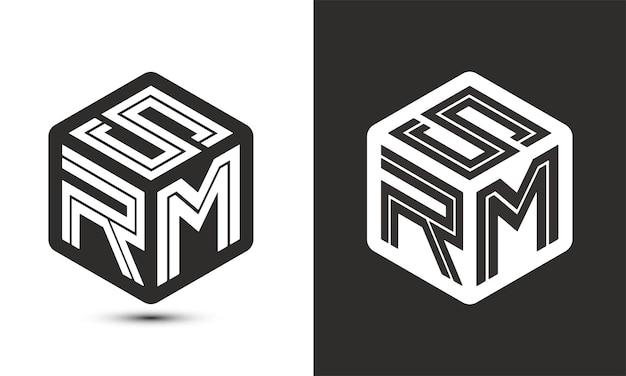If you’ve ever wondered about the environmental impact of a construction project or a proposed development, you may have come across the terms Environmental Impact Assessment (EIA) and Environmental Impact Statement (EIS). While they may sound similar, there are important distinctions between the two.
In this blog post, we’ll dive into the world of environmental assessments and explain the difference between EIA and EIS. We’ll also explore the key objectives, types, challenges, and important aspects of EIA. So, whether you’re an environmental enthusiast, a professional in the field, or simply curious about the topic, this blog post will provide you with insights into these crucial concepts. Let’s get started!
Estimated reading time: 5 minutes

What Sets EIA and EIS Apart?
When it comes to environmental impact assessments and environmental impact statements, it’s easy to get tangled up in abbreviations. You might find yourself wondering: What’s the difference between EIA and EIS? Don’t worry; we’ve got you covered with a breakdown that’s informative, light-hearted, and designed to make you chuckle at least once. Let’s dive right in!
The Foundation: Understanding EIA
An Environmental Impact Assessment (EIA) is like the starting point for any major project that could potentially have adverse effects on the environment or surrounding communities. It’s like the foundation of a house; without it, everything could come crashing down!
EIA: The Nitty-Gritty Details
In a nutshell, an EIA is a comprehensive evaluation of a project’s potential environmental impacts. It’s an in-depth analysis that covers everything from air pollution to biodiversity loss and noise disturbance. The goal is to identify and assess the potential negative consequences, allowing decision-makers to make informed choices while considering the environment.
Examining the Meat and Potatoes of EIS
Environmental Impact Statements (EIS), on the other hand, take things one step further. Think of them as the main course of an environmental assessment feast. An EIS goes beyond just evaluating impacts; it provides a detailed plan to mitigate those negative effects. It’s like coming prepared to a fancy dinner with a full menu of solutions!
EIS: A Comprehensive Plan of Action
An EIS includes a detailed outline of the project’s anticipated environmental effects, mitigation measures, alternative proposals, and even a “no action” option. It’s a comprehensive road map that guides decision-makers toward environmentally conscious choices.
Similar Goals, Slightly Different Approaches
While both EIA and EIS aim to protect the environment, they differ slightly in their approach. An EIA primarily focuses on identifying and assessing potential impacts, providing decision-makers with crucial information. On the other hand, an EIS builds on the findings of an EIA and offers a clear framework for minimizing, mitigating, or even avoiding adverse environmental consequences altogether.
Time for a Quick Recap
To sum it up, an EIA is like the warm-up act of an environmental assessment, providing a detailed analysis of potential impacts. An EIS then steals the show by offering not just the analysis, but also a deliberate plan of action to protect the environment.
Wrapping Up
Now that you’re equipped with this knowledge, you can confidently explain the difference between EIA and EIS to anyone who dares to ask. Remember, both assessments play vital roles in preserving our planet, and understanding their unique contributions is crucial in making informed decisions. Keep in mind, though, that while this information is accurate in 2023, it’s always wise to stay updated as the regulations and guidelines might evolve over time. Until then, go forth and champion the cause of environmental assessment, one impact at a time!

FAQ: What is the Difference Between EIA and EIS?
Welcome to our comprehensive FAQ-style guide on the difference between Environmental Impact Assessment (EIA) and Environmental Impact Statement (EIS). In this section, we’ll address some common questions about these two crucial environmental assessment processes.
What is included in an environmental assessment
An environmental assessment typically includes a comprehensive evaluation of the potential impacts a proposed project may have on various environmental elements. This may encompass an analysis of factors such as air and water quality, biodiversity, noise levels, land use, and socio-economic conditions.
What is the problem with EIA 2020
EIA 2020 refers to the Environmental Impact Assessment notification issued in India. One of the main concerns regarding EIA 2020 is that it reportedly contains certain provisions that could weaken environmental regulations and may not adequately address the concerns of various stakeholders.
What is the goal of EIA
The primary goal of EIA is to identify and evaluate potential environmental effects of a proposed project before it is carried out. It helps inform decision-makers and stakeholders about the potential impacts, both positive and negative, of a development project, allowing for better-informed decisions and mitigation measures.
What is impact prediction in EIA
Impact prediction in EIA involves assessing and determining the potential environmental effects that a project may have. Through careful analysis and expert judgment, the EIA process aims to predict and identify these impacts across different environmental components, such as air quality, water resources, wildlife, and human communities.
What are the types of EIA
EIA can be categorized into various types, including preliminary assessments, scoping assessments, comprehensive assessments, and cumulative assessments. The specific type chosen depends on the nature, scale, and complexity of the project being assessed.
What are the challenges of EIA
EIA can pose several challenges, such as the need for expert knowledge and technical skills, potential biases or conflicts of interest, coordination among different stakeholders, and the difficulty of accurately predicting long-term environmental impacts. These challenges highlight the importance of a robust and well-regulated EIA process.
What are the characteristics of the EIA team
An effective EIA team typically comprises multidisciplinary experts, including environmental scientists, engineers, ecologists, sociologists, and economists. The team should possess a diverse skill set to adequately address various environmental and social aspects of a proposed project during the assessment process.
What is EIA 2020
EIA 2020 is an abbreviation for the Environmental Impact Assessment notification issued in India in 2020. It outlines the regulatory framework for conducting environmental assessments for projects in the country and specifies the procedures and requirements to be followed.
Who uses EIA
EIA is used by a range of stakeholders, including government agencies, project developers, local communities, NGOs, and regulatory bodies. It serves as a valuable tool for decision-making, ensuring that proposed projects are assessed for their potential environmental impacts before implementation.
What are the key objectives of EIA review
The key objectives of EIA review include assessing the adequacy and accuracy of the environmental assessment process, evaluating the predicted impacts and proposed mitigation measures, considering alternatives, engaging with stakeholders, and ensuring compliance with relevant regulations and guidelines.
What is the difference between EIA and EIS
EIA, or Environmental Impact Assessment, refers to the process of evaluating potential environmental impacts before a project is carried out. On the other hand, an EIS, or Environmental Impact Statement, is a formal document that presents the findings of the EIA process. The EIS provides a detailed account of the potential impacts, proposed mitigation measures, and alternative options considered.
How much does an EIA cost
The cost of an EIA can vary depending on the scale, complexity, and duration of the project. Factors such as the extent of data collection, the need for expert consultations, and the review process required can influence the overall cost. It’s important to budget for EIA expenses when planning and financing a project.
What is EIA Act
The term “EIA Act” refers to the legislation or set of regulations that govern the processes and requirements for conducting Environmental Impact Assessments. These acts are usually put in place by national or regional governments to ensure the adequate assessment of projects’ potential impacts on the environment.
What are the four major steps involved in undertaking environmental impact assessment
Environmental Impact Assessment typically involves four major steps: scoping, impact assessment, mitigation, and monitoring. Scoping defines the boundaries and scope of the assessment, impact assessment evaluates potential impacts, mitigation identifies measures to reduce negative impacts, and monitoring ensures the project adheres to the proposed mitigation measures.
What is the purpose of mitigation
Mitigation aims to minimize or prevent adverse environmental impacts resulting from a project. It involves the identification and implementation of measures that can either avoid or reduce the potential negative effects on the environment, promoting sustainable development practices.
Why is environmental impact important
Environmental impact assessment is vital for sustainable development. It ensures that potential environmental impacts associated with a project are considered and addressed before decisions are made. By identifying and mitigating adverse effects, EIA helps protect natural resources, maintain ecological balance, and safeguard the well-being of both present and future generations.
We hope this FAQ-style guide has provided you with valuable insights into the difference between EIA and EIS. Understanding these environmental assessment processes is crucial for promoting sustainable development and ensuring the long-term well-being of our environment and communities.
